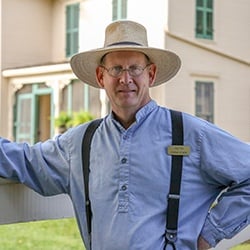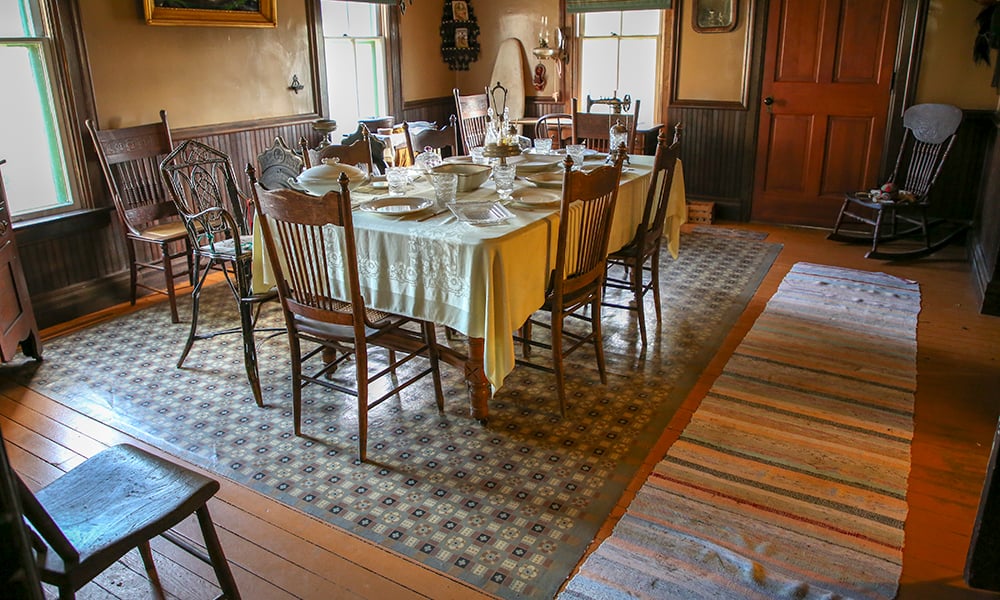
Keeping up with housecleaning is always a challenge. Finding time to clean, having the right tools and getting everyone else out of the house are all helpful. It is no different with Kline Creek Farm’s farmhouse museum. Follow along as I describe how we clean the dining room.
Our first step is updating our housekeeping plan. Our housekeeping plan is a 19-page document that details the what, when and how we will clean. It helps to coordinate the work of three staffers and has been copied by other museums. It lists the equipment we use and how to maintain it. It lists the areas that need cleaning and maps out a schedule for cleaning them. It also has a checklist for each area so staff can note when each area was last cleaned.
Each January we review the housekeeping plan to make sure it is all relevant and see if we were able to keep up with the plan. We make adjustments if some artifacts have been moved or if we need to step up cleaning in some area, or if sensitive areas might be better if they were not handled so much. Our goal is to remove dust, check for damage and make the farmhouse look and feel like an 1890s farmhouse. Our level of cleaning and staff expertise are nowhere near the level of museums like the Art Institute in Chicago. We do have some one-of-a-kind artwork, but our most valuable artifact is worth about $12,000, not millions. We can contract with a conservator if an artifact needs a level of care we cannot provide.
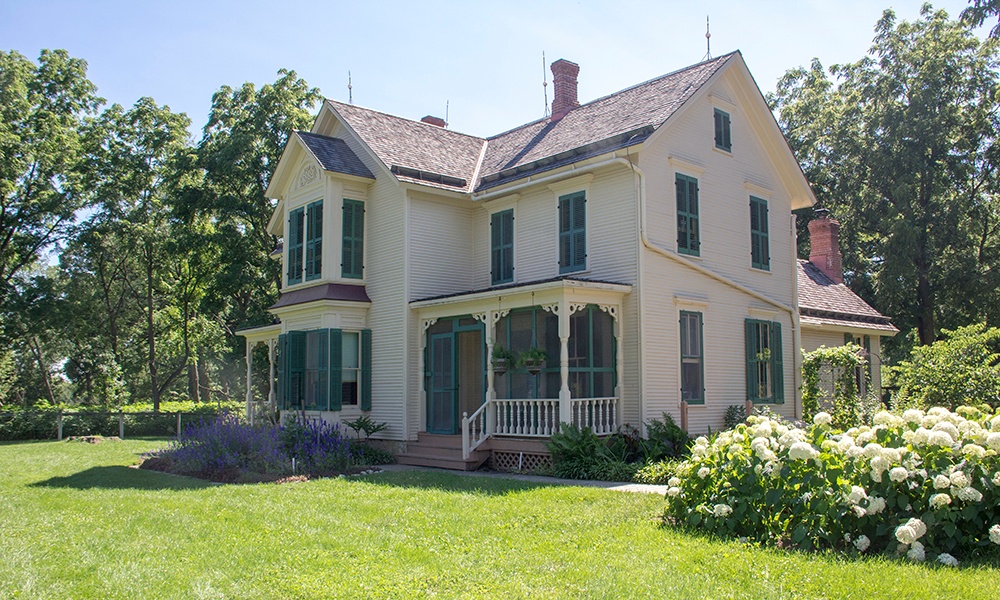
I came in on a Sunday morning to clean the dining room because I have been busy, but I want to keep up with the housekeeping plan. I put covers over my shoes so I would not scratch the oil cloth, I picked out two dust cloths, put on cotton gloves and set up our vacuum, which is designed for museums. It has a variable speed motor so you can be gentile on some surfaces but still clean the floor. It also has an adjustable opening so you can quickly change the suction strength. We have fabrics that are so fragile that we put the vacuum on super low suction and just run it close. We can also put a screen between to prevent the vacuum from pulling any threads. The vacuum motor is expensive because it will run for an hour as we slowly vacuum all the surfaces in a room.
I start by moving all the furniture I can out of the room. I don’t want to bump things as I move through the room. I vacuum the ceiling and walls. I try to do all the high areas first and work my way down. I then take off the extension so I can get close to the small things hanging on the walls. There is a pair of glasses in a case hanging over the sewing machine. It’s little details like these that make the farmhouse museum such a wonderful sight to see. You may not notice all of them on the tour, but I can guarantee your tour would not feel the same without them.
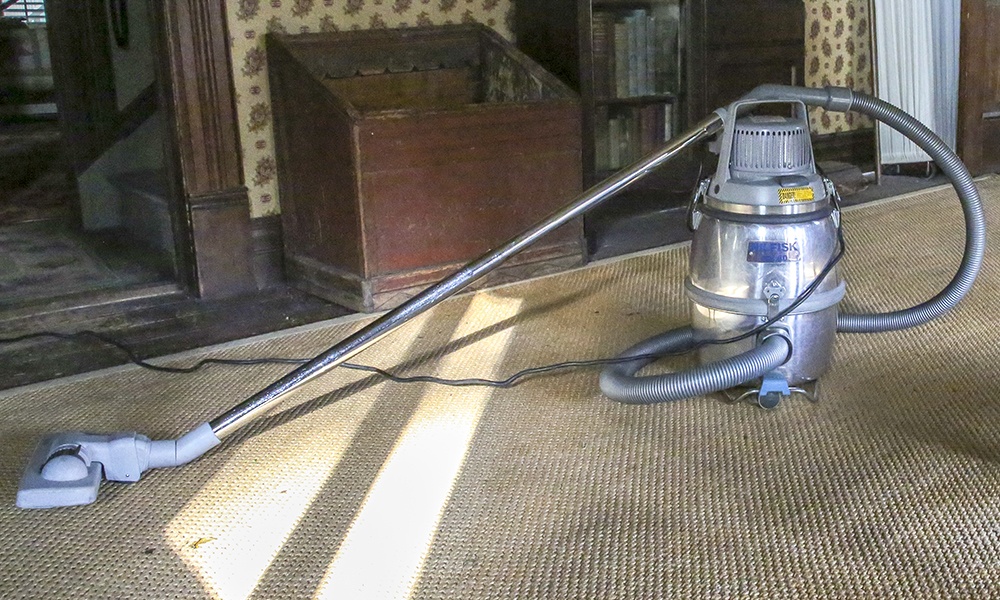
We have a child’s toy Bissell sweeper. It is usually in the dining room behind the ironing board. Most visitors may not notice it, but it is a very cool connection to the past. Children’s toys helped prepare kids to be adults. Toys like irons and this sweeper, were fully functional. Kids could help clean with kid-sized tools.
I clean the room in sections so I can manage the vacuum’s cord and not forget anything. I stoop, crawl and reach as I try to remove as much dust as possible. It’s exhausting work and I’m feeling a bit rushed because the first house tour starts at 10 a.m.
Once the heavy artifacts, like the stove and the table, are clean, I clean the things I moved out of the room. One by one I vacuum or wipe dust from the high chair, oil lamps and dishes. I check to see if there is any damage as I put the artifacts back in place. I can hear the kitchen clock chime ten — my time is up. I clean the last few things and put the equipment away. I hope the visitors coming on this tour have a wonderful connection to history, and I hope they never know I was there. Tomorrow morning I will clean the sitting room; it is not easy keeping up with the housekeeping plan.
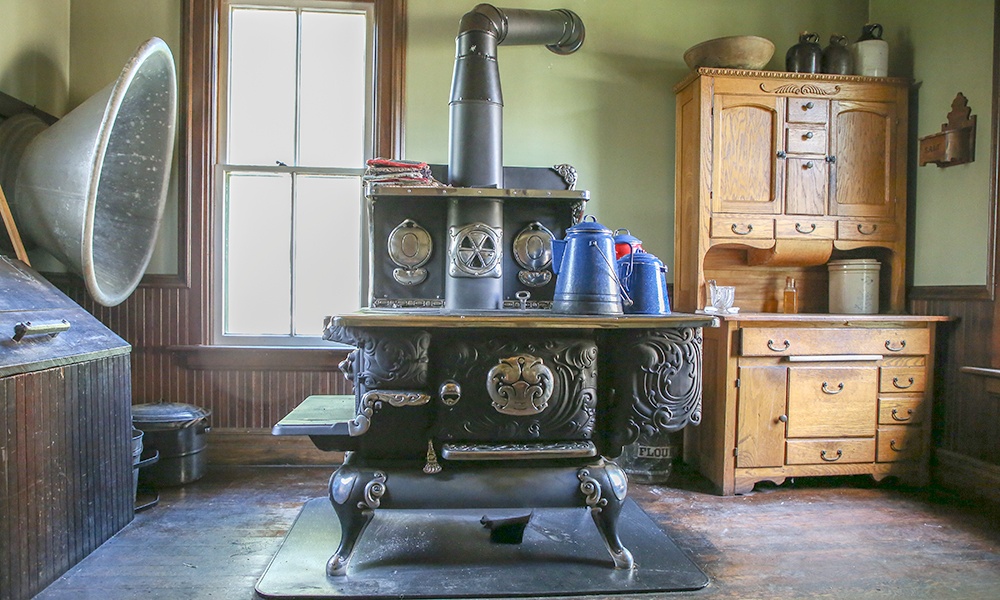
Other stories in the series:
Part 1: Remodeling an 1880s Farmhouse Museum
Part 2: The Kitchen Wood-Burning Stove
Part 3: The Parlor Pump Organ
Part 4: The Dining Room Oilcloth
Keith McClow
